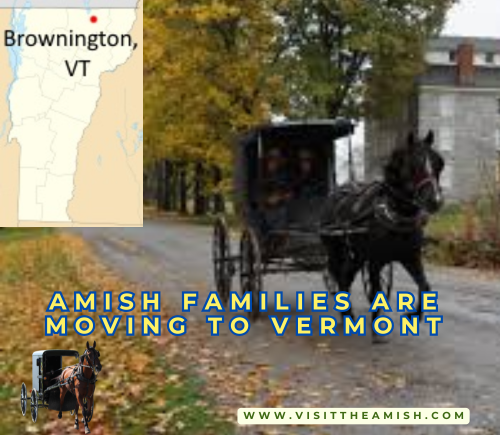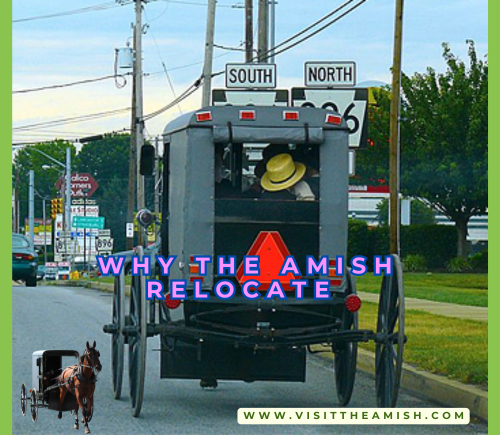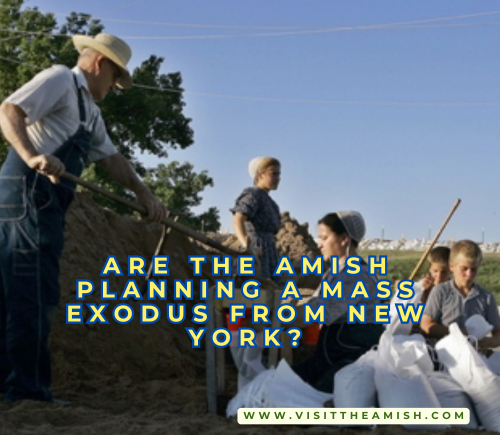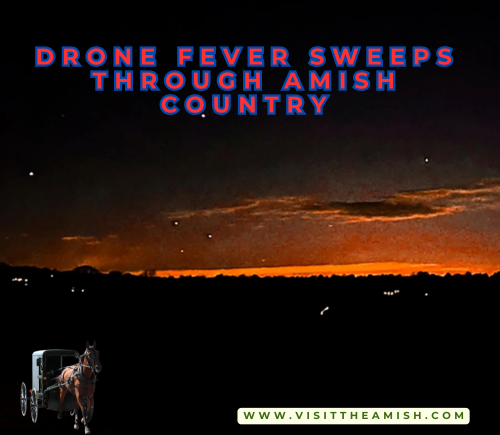Amish Families Find New Home in Vermont
In a surprising twist of fate, Vermont’s efforts to attract new residents have been unexpectedly bolstered by the quiet arrival of Amish families in the state’s Northeast Kingdom. Since 2015, a group of about 10 closely related Amish families has been steadily settling in the area, bringing with them a traditional way of life that seems to blend seamlessly with Vermont’s rural landscape[1].
These newcomers, originally from Ohio and Pennsylvania, have purchased farms and land in the region, constructing large barns and houses. Their presence is now a familiar sight in the community, with horse-drawn buggies traversing the dirt roads and draft horses plowing fields[1]. The Vermont Agency of Transportation has even installed yellow road signs to alert drivers to the potential presence of slow-moving Amish carriages[1].
The Amish families have quickly become an integral part of the local economy and community. They operate farm stands, run community-supported agriculture programs, and have even started an independent Amish elementary school in Brownington[1]. Their carpentry skills have been put to good use on several local projects, including repair work on historic buildings at the Old Stone House Museum[1].
Andy Shetler, an Amish farmer who moved to Brownington, expressed the community’s desire to maintain their agricultural lifestyle. “We wanted to be farmers; I want my children to be farmers,” he said[1]. The move to Vermont was partly motivated by the need for high-quality, affordable farmland that could accommodate their large families[1].

Local realtor Dan McClure has played a significant role in helping the Amish families find suitable properties. He noted that factors such as soil quality, water purity, and the need for space to expand their farming operations influenced their decision to settle in Vermont[1].
The Amish community in Vermont is affiliated with the conservative “Troyer Amish” subgroup, known for their traditional practices[1]. They maintain their distinctive dress and customs while interacting with their non-Amish neighbors, creating a unique cultural dynamic in the area[1].
As the Amish population in Vermont continues to grow, with new families looking to settle around North Troy and Lowell, it seems that these unexpected immigrants have found a welcoming home in the Green Mountain State. Their presence adds a new dimension to Vermont’s rural landscape, bridging the gap between the state’s agricultural past and its present[1].
The Amish families have integrated well into the local community in Vermont’s Northeast Kingdom since their arrival around 2015. They have become an integral part of the rural landscape and economy in several ways:
- Agriculture: The Amish have revitalized local agriculture by establishing farms, raising produce and animals, and running farm stands and community-supported agriculture operations[1][4]. They’ve even successfully grown watermelons, which was initially surprising to local residents[4].
- Business and trade: Amish men have worked as skilled carpenters on several local projects, including repairing historic buildings[1]. Their carpentry skills have become highly valued in the community, with Amish craftsmen excelling at tasks from porch repairs to cabinetry[5].
- Community events: The Amish operate an annual fish fry as a fundraiser for medical costs, which hundreds of Vermonters attend[1]. This event has become a popular way for the Amish to connect with their non-Amish neighbors.
- Education: The Amish families have established an independent Amish elementary school in Brownington, demonstrating their commitment to maintaining their traditions while settling in Vermont[1].
- Economic contribution: Their presence has given a boost to the region’s agriculture and provided competition to local building contractors, contributing to the local economy[5].
- Collaboration with local institutions: The Old Stone House Museum has leased some of its land to an Amish farmer, showing a cooperative relationship between the Amish and local cultural institutions[5].

While the Amish maintain their distinct lifestyle and traditions, they have formed friendships with non-Amish neighbors and found ways to coexist and contribute to the community. Their horse-drawn buggies and traditional farming methods have become a familiar sight, adding a unique dimension to Vermont’s rural landscape[1][4].
Citations:
[1] https://www.vnews.com/Amish-families-quietly-take-up-residence-in-the-Northeast-Kingdom-21006115
[2] https://salomafurlong.com/aboutamish/2020/09/soul-restoring-trip-to-northeast/
[3] https://amishamerica.com/amish-moving-to-vermont/
[4] https://www.reddit.com/r/vermont/comments/4x311k/whats_up_with_the_amish_in_the_northeast_kingdom/
[5] https://www.vermontpublic.org/podcast/brave-little-state/2021-10-21/six-years-ago-amish-families-started-settling-in-vermont-how-are-they-doing
[6] https://www.vtfarmfund.org/borrowers/shetler-family-farm
[7] https://cloudfront-us-east-1.images.arcpublishing.com/bostonglobe/Q3II445VF2CHIVCYQQ6V6GPT5E.JPG?sa=X&ved=2ahUKEwi5zbu336yKAxWSQjABHa7gCMMQ_B16BAgFEAI
[8] https://www.bostonglobe.com/2020/12/26/metro/they-just-sort-showed-up-amish-find-home-vermonts-northeast-kingdom/












